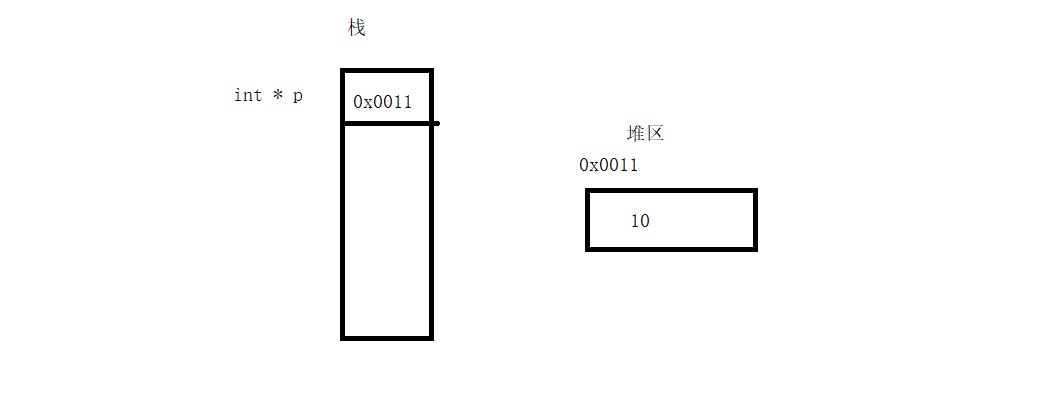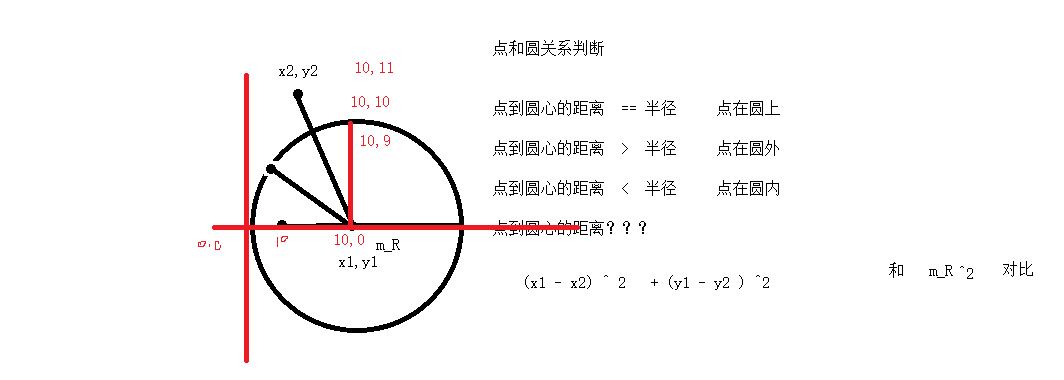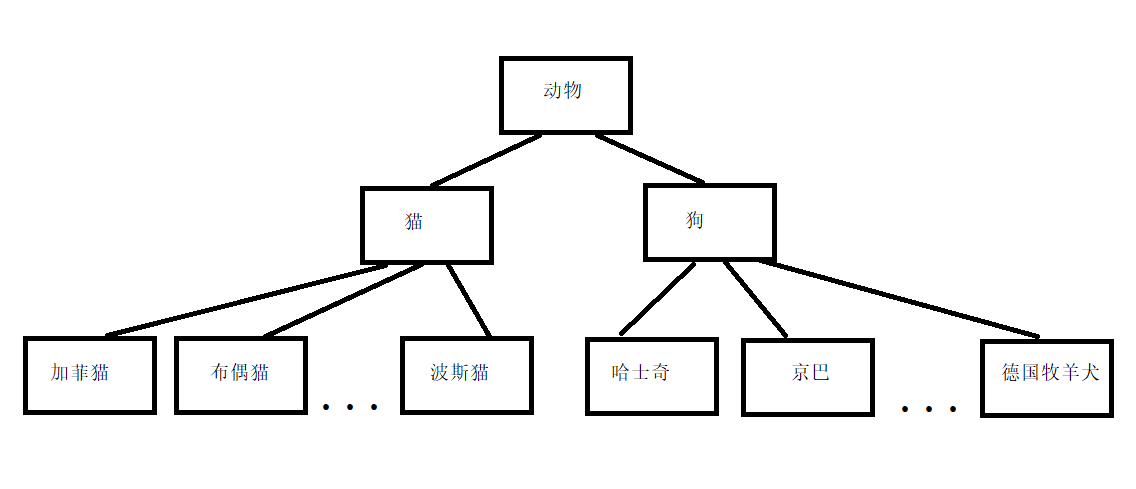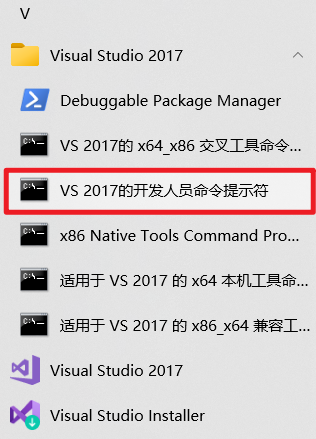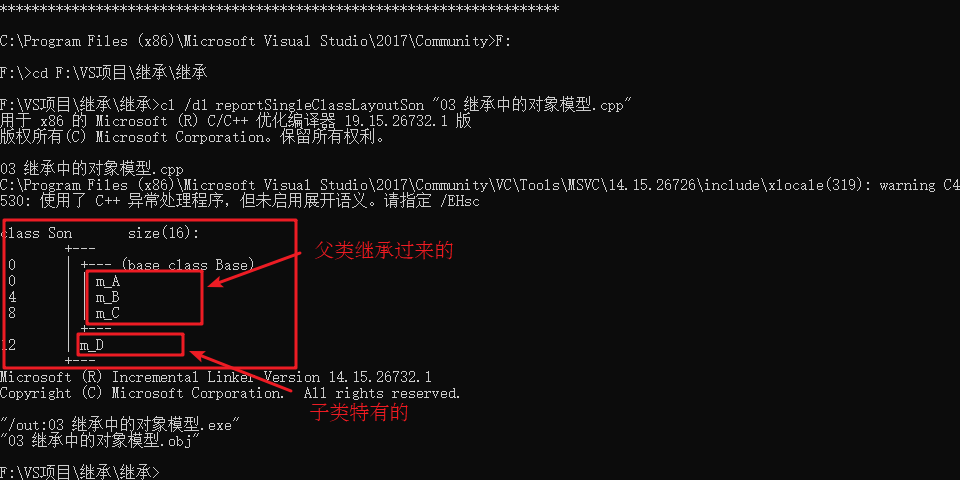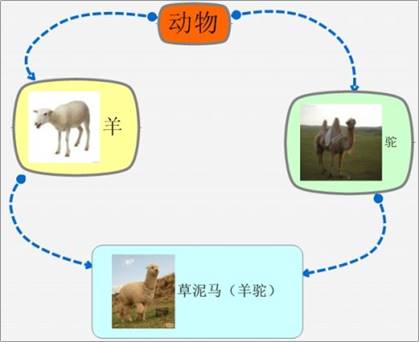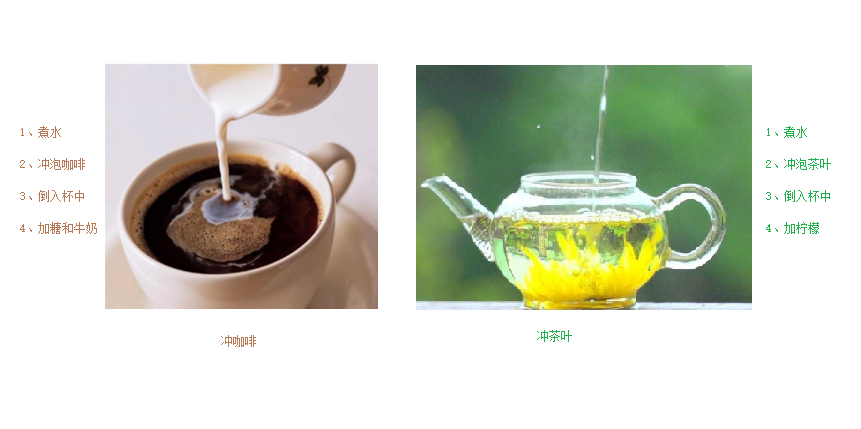以下内容均来自B站黑马程序员C++,小张大三了由于中途转专业需要补修课程所以自学C++,写了这份笔记以及一些思考,看到好多人要讲义,所以在此分享,在学习C++之前,接触过JAVA、python、操作系统、计算机组成原理…为什么高校大一就学C++呢,我虽然先学的别的但深有体会,编程语言大多都是基础语法与面向对象,他们其实很类似的,而C++又是编程中最最最基础的语言,学好C++之后的其它编程语言都可以轻松上手,而且操作系统、计组又可以解释他们的底层逻辑(例如我写的基础语法入门2.1),看不懂也没关系,这门课重在让大家入门学习。
为什么选择黑马?因为我的JAVA也是跟着黑马学的,他真的对小白很友好,所以建议各位同学可以跟着B站边看边敲,真的很有用!
本阶段主要针对C++面向对象编程技术做详细讲解,探讨C++中的核心和精髓
一、内存分区模型
C++程序在执行时,将内存大方向划分为4个区域
- 代码区:存放函数体的二进制代码,由操作系统进行管理的
- 全局区:存放全局变量和静态变量以及常量
- 栈区:由编译器自动分配释放, 存放函数的参数值,局部变量等
- 堆区:由程序员分配和释放,若程序员不释放,程序结束时由操作系统回收
内存四区意义:
不同区域存放的数据,赋予不同的生命周期, 给我们更大的灵活编程
1.1 程序运行前
在程序编译后,生成了exe可执行程序,未执行该程序前分为两个区域
代码区:
全局区:
eg:
int g_a = 10;
int g_b = 10;
const int c_g_a = 10;
const int c_g_b = 10;
int main() {
int a = 10;
int b = 10;
cout << "局部变量a地址为: " << (int)&a << endl;
cout << "局部变量b地址为: " << (int)&b << endl;
cout << "全局变量g_a地址为: " << (int)&g_a << endl;
cout << "全局变量g_b地址为: " << (int)&g_b << endl;
static int s_a = 10;
static int s_b = 10;
cout << "静态变量s_a地址为: " << (int)&s_a << endl;
cout << "静态变量s_b地址为: " << (int)&s_b << endl;
cout << "字符串常量地址为: " << (int)&"hello world" << endl;
cout << "字符串常量地址为: " << (int)&"hello world1" << endl;
cout << "全局常量c_g_a地址为: " << (int)&c_g_a << endl;
cout << "全局常量c_g_b地址为: " << (int)&c_g_b << endl;
const int c_l_a = 10;
const int c_l_b = 10;
cout << "局部常量c_l_a地址为: " << (int)&c_l_a << endl;
cout << "局部常量c_l_b地址为: " << (int)&c_l_b << endl;
system("pause");
return 0;
}
|
输出结果
- 局部变量a的地址为: 13629532
局部变量b的地址为: 13629520
全局变量g_a的地址为: 15646784
全局变量g_b的地址为: 15646788
静态变量s_a的地址为: 15646792
静态变量s_b的地址为: 15646796
字符串常量的地址为15637396
全局常量 c_g_a的地址为:15637564
全局常量 c_g_b的地址为:15637568
局部常量 c_l_a的地址为:13629508
局部常量 c_l_b的地址为:13629496
总结
- C++中在程序运行前分为全局区和代码区
- 代码区特点是共享和只读
- 全局区中存放全局变量、静态变量、常量
- 常量区中存放 const修饰的全局常量 和 字符串常量

1.2 程序运行后
栈区:
由编译器自动分配释放, 存放函数的参数值,局部变量等
注意事项:不要返回局部变量的地址,栈区开辟的数据由编译器自动释放
eg:
int* func()
{
int a = 10;
return &a;
}
int main()
{
int * p = func();
cout << "*p = " << *p << endl;
cout << "*p = " << *p << endl;
system("pause");
return 0;
}
|
输出结果
堆区:
eg:
int* func()
{
int * p = new int(10);
return p;
}
int main()
{
int * p = func();
cout << "*p=" << *p << endl;
cout << "*p=" << *p << endl;
system("pause");
return 0;
}
|
输出结果
总结
- 堆区数据由程序员管理开辟和释放
- 堆区数据利用new关键字进行开辟内存

1.3 new操作符
C++中利用new操作符在堆区开辟数据
堆区开辟的数据,由程序员手动开辟,手动释放,释放利用操作符 delete
语法: new 数据类型
利用new创建的数据,会返回该数据对应的类型的指针
eg 1: 基本语法
#include <iostream>
using namespace std;
int * func()
{
int * p=new int(10);
return p;
}
void test01()
{
int *p = func();
cout << "*p = " << *p << endl;
cout << "*p = " << *p << endl;
delete p;
}
int main()
{
test01();
system("pause");
return 0;
}
|
输出结果
eg 2:开辟数组
int main() {
int * arr=new int[10];
for (int i = 0; i < 10; i++)
{
arr[i] = i + 100;
}
for (int i = 0; i < 10; i++)
{
cout << arr[i] << " ";
}
cout << endl;
delete[] arr;
system("pause");
return 0;
}
|
输出结果
- 100 101 102 103 104 105 106 107 108 109
二、引用
2.1 引用的基本使用
作用: 给变量起别名
语法: 数据类型 &别名 = 原名
eg:
int main()
{
int a = 10;
int &b = a;
cout << "a = " << a << endl;
cout << "b = " << b << endl;
b = 20;
cout << "a = " << a << endl;
cout << "b = " << b << endl;
system("pause");
return 0;
}
|
输出结果
2.2 引用注意事项
eg:
int main()
{
int a = 10;
int &b = a;
int c = 20;
b = c;
cout << "a = " << a << endl;
cout << "b = " << b << endl;
cout << "c = " << c << endl;
system("pause");
return 0;
}
|
输出结果
2.3 引用做函数参数
作用:函数传参时,可以利用引用的技术让形参修饰实参
优点:可以简化指针修改实参
eg:
void mySwap01(int a, int b)
{
int temp=a;
a = b;
b = temp;
cout << "swap_01 a = " << a << endl;
cout << "swap_01 b = " << b << endl;
}
void mySwap02(int *a, int *b)
{
int temp = *a;
*a = *b;
*b = temp;
}
void mySwap03(int &a, int &b)
{
int temp = a;
a = b;
b = temp;
}
int main()
{
int a = 10;
int b = 20;
mySwap03(a, b);
cout << "a = " << a << endl;
cout << "b = " << b << endl;
system("pause");
return 0;
}
|
总结:通过引用参数产生的效果同按地址传递是一样的。引用的语法更清楚简单
2.4 引用做函数返回值
作用:引用是可以作为函数的返回值存在的
注意: 不要返回局部变量引用
用法:函数调用作为左值
eg:
int& test01()
{
int a = 10;
return a;
}
int& test02()
{
static int a = 10;
return a;
}
int main()
{
int &ref2 = test02();
cout << "ref2 = " << ref2 << endl;
cout << "ref2 = " << ref2 << endl;
test02()=1000;
cout << "ref2 = " << ref2 << endl;
cout << "ref2 = " << ref2 << endl;
system("pause");
return 0;
}
|
输出结果
- ref2 = 10
ref2 = 10
ref2 = 1000
ref2 = 1000
第24行test02()=1000;相当于a=1000,a的别名又是ref2所以ref2=1000
2.5 引用的本质
本质: 引用的本质在c++内部实现是一个指针常量
eg:
void func(int& ref){
ref = 100;
}
int main(){
int a = 10;
int& ref = a;
ref = 20;
cout << "a:" << a << endl;
cout << "ref:" << ref << endl;
func(a);
return 0;
}
|
结论:C++推荐用引用技术,因为语法方便,引用本质是指针常量,但是所有的指针操作编译器都帮我们做了

2.6 常量引用
作用:常量引用主要用来修饰形参,防止误操作
在函数形参列表中,可以加const修饰形参,防止形参改变实参
eg:
void showValue(const int &val)
{
cout << "val = " << val << endl;
}
int main()
{
const int &ref = 10;
int a = 100;
showValue(a);
cout << "a = " << a << endl;
system("pause");
return 0;
}
|
总结,const可以修饰
三、 函数提高
3.1 函数默认参数
在C++中,函数的形参列表中的形参是可以有默认值的
语法: 返回值类型 函数名 (参数= 默认值){}
eg:
int func(int a, int b=20, int c=30)
{
return a + b + c;
}
int func2(int a=10, int b=10);
int func2(int a , int b)
{
return a + b;
}
int main()
{
cout<<func(10)<<endl;
cout << func(10, 30) << endl;
cout << func2() << endl;
system("pause");
return 0;
}
|
输出结果
总结
- 如果我们自己传入数据,就用自己的数据,如果没有,那么用默认值
- 如果某个位置已经有了默认参数,那么从这个位置往后,从左到右都必须有默认值
- 如果函数的声明有了默认参数,函数实现就不能有默认参数
3.2 函数占位参数
C++中函数的形参列表里可以有占位参数,用来做占位,调用函数时必须填补该位置
语法: 返回值类型 函数名 (数据类型){}
在现阶段函数的占位参数存在意义不大,但是后面的课程中会用到该技术
eg:
void func(int a, int)
{
cout << "this is function1" << endl;
}
void func1(int a,int =10)
{
cout << "this is function2" << endl;
}
int main()
{
func(10,10);
func1(10);
system("pause");
return 0;
}
|
输出结果
- this is func1
- this is func2
3.3 函数重载
3.3.1 函数重载概述
作用:函数名可以相同,提高复用性
函数重载满足条件:
- 同一个作用域下
- 函数名称相同
- 函数参数类型不同 或者 个数不同 或者 顺序不同
注意: 函数的返回值不可以作为函数重载的条件
eg:
void func()
{
cout << "func 的调用" << endl;
}
void func(int a)
{
cout << "func(int a) 的调用" << endl;
}
void func(double a)
{
cout << "func(double a) 的调用" << endl;
}
void func(int a, double b)
{
cout << "func(int a,double b) 的调用" << endl;
}
void func(double a, int b)
{
cout << "func(double a,int b) 的调用" << endl;
}
int main()
{
func();
func(10);
func(3.14);
func(10, 3.14);
func(3.14, 10);
system("pause");
return 0;
}
|
输出结果
- func 的调用
func(int a) 的调用
func(double a) 的调用
func(int a,double b) 的调用
func(double a,int b) 的调用
视频中函数的返回值不可以作为函数重载的条件,其实有接收变量也可以重载
int func(double a, int b)
{
cout << "func(double a,int b) 的调用" << endl;
return 0;
}
int main()
{
int a=func(3.14, 10);
system("pause");
return 0;
}
|
3.3.2 函数重载注意事项
eg:
void func(int &a)
{
cout << "func(int &a)调用" << endl;
}
void func(const int &a)
{
cout << "func(const int &a)调用" << endl;
}
void func2(int a,int b=10)
{
cout << "func2(int a,int b=10)调用" << endl;
}
void func2(int a)
{
cout << "func2(int a)调用" << endl;
}
int main()
{
int a = 10;
func(a);
func(10);
system("pause");
return 0;
}
|
输出结果
- func(int &a)调用
func(const int &a)调用
四、类对象
C++面向对象的三大特性为:封装、继承、多态
C++认为万事万物都皆为对象,对象上有其属性和行为
eg:
人可以作为对象,属性有姓名、年龄、身高、体重…,行为有走、跑、跳、吃饭、唱歌…
车也可以作为对象,属性有轮胎、方向盘、车灯…,行为有载人、放音乐、放空调…
具有相同性质的对象,我们可以抽象称为类,人属于人类,车属于车类
4.1 封装
4.1.1 封装的意义
封装是C++面向对象三大特性之一
封装的意义:
- 将属性和行为作为一个整体,表现生活中的事物
- 将属性和行为加以权限控制
封装意义一:
在设计类的时候,属性和行为写在一起,表现事物
语法: class 类名{ 访问权限: 属性 / 行为 };
eg 1:设计一个圆类,求圆的周长
示例代码:
const double PI = 3.14;
class Circle
{
public:
int m_r;
double calculateZC()
{
return 2 * PI*m_r;
}
};
int main()
{
Circle c1;
c1.m_r = 10;
cout << "圆的周长为:" << c1.calculateZC() << endl;
system("pause");
return 0;
}
|
输出结果
eg 2:设计一个学生类,属性有姓名和学号,可以给姓名和学号赋值,可以显示学生的姓名和学号
eg 2代码:
class Student
{
public:
string m_Name;
int m_Id;
void show()
{
cout << m_Name <<" "<< m_Id << endl;
}
void setName(string name)
{
m_Name = name;
}
void setId(int Id)
{
m_Id = Id;
}
};
int main()
{
Student s1;
s1.setName("张三");
s1.m_Id = 1;
s1.show();
Student s2;
s2.m_Name="李四";
s2.m_Id = 2;
s2.show();
system("pause");
return 0;
}
|
输出结果
封装意义二:
类在设计时,可以把属性和行为放在不同的权限下,加以控制
访问权限有三种:
- public 公共权限
- protected 保护权限
- private 私有权限
eg:
class Person
{
public:
string m_Name;
protected:
string m_Car;
private:
int m_Password;
public:
void func()
{
m_Name = "张三";
m_Car = "拖拉机";
m_Password = 123456;
}
};
int main()
{
Person p1;
p1.m_Name = "李四";
p1.func();
system("pause");
return 0;
}
|
总结
- 公共权限 public 成员 类内可以访问 类外可以访问
- 保护权限 protected 成员 类内可以访问 类外不可以访问 子可以访问父的保护内容
- 私有权限 private 成员 类内可以访问 类外不可以访问 子不可以访问父的私有内容
4.1.2 struct和class区别
在C++中 struct和class唯一的区别就在于 默认的访问权限不同
区别:
- struct 默认权限为公共
- class 默认权限为私有
class C1
{
int m_A;
};
struct C2
{
int m_A;
};
int main()
{
C1 c1;
C2 c2;
c2.m_A = 100;
system("pause");
return 0;
}
|
4.1.3 成员属性设置为私有
优点1:将所有成员属性设置为私有,可以自己控制读写权限
优点2:对于写权限,我们可以检测数据的有效性
eg:
class Person
{
public:
void SetName(string name)
{
m_Name = name;
}
string getName()
{
return m_Name;
}
int getAge()
{
m_Age = 0;
return m_Age;
}
void setAge(int age)
{
if (age < 0 || age>150)
{
cout << "输入有误" << endl;
return;
}
m_Age = age;
}
void setLover(string Lover)
{
m_Lover = Lover;
}
private:
string m_Name;
int m_Age;
string m_Lover;
};
int main()
{
Person p;
p.SetName("张三");
cout << "姓名为:" << p.getName() << endl;
p.setAge(1000);
cout << "年龄为:" << p.getAge() << endl;
p.setLover("苍井");
system("pause");
return 0;
}
|
练习案例1:设计立方体类
设计立方体类(Cube)
求出立方体的面积和体积
分别用全局函数和成员函数判断两个立方体是否相等


class Cube
{
public:
void setL(int L)
{
m_L = L;
}
int getL()
{
return m_L;
}
void setW(int W)
{
m_W = W;
}
int getW()
{
return m_W;
}
void setH(int H)
{
m_H = H;
}
int getH()
{
return m_H;
}
int calculateS()
{
return 2 * m_L*m_W + 2 * m_W*m_H + 2 * m_L*m_H;
}
int calculateC()
{
return m_L * m_W *m_H;
}
bool isSameByClass(Cube &c)
{
if (m_L == c.getL() && m_W== c.getW() && m_H == c.getH())
{
return true;
}
else
{
return false;
}
}
private:
int m_L;
int m_W;
int m_H;
};
bool isSame(Cube &c1, Cube &c2)
{
if (c1.getL() == c2.getL() && c1.getW() == c2.getW()&& c1.getH() == c2.getH())
{
return true;
}
else
{
return false;
}
}
int main()
{
Cube c1;
c1.setL(10);
c1.setW(10);
c1.setH(10);
cout << "c1的面积:" << c1.calculateC() << endl;
cout << "c1的体积:" << c1.calculateS() << endl;
Cube c2;
c2.setL(10);
c2.setW(10);
c2.setH(10);
cout << "c1的面积:" << c1.calculateC() << endl;
cout << "c1的体积:" << c1.calculateS() << endl;
bool ret = isSame(c1, c2);
if (ret)
cout << "c1和c2是相等的" << endl;
else
cout << "c1和c2不相等的" << endl;
bool ret2 = c1.isSameByClass(c2);
if (ret2)
cout << "c1和c2是相等的" << endl;
else
cout << "c1和c2不相等的" << endl;
system("pause");
return 0;
}
|
输出结果
- c1的面积:1000
c1的体积:600
c1的面积:1000
c1的体积:600
c1和c2是相等的
c1和c2是相等的
练习案例2:点和圆的关系
设计一个圆形类(Circle),和一个点类(Point),计算点和圆的关系


class Point
{
public:
void setX(int x)
{
p_X = x;
}
void setY(int y)
{
p_Y = y;
}
int getX()
{
return p_X;
}
int getY()
{
return p_Y;
}
private:
int p_X;
int p_Y;
};
class Circle
{
public:
void setR(int r)
{
c_R = r;
}
int getR()
{
return c_R;
}
void setCenter(Point center)
{
m_Center = center;
}
Point getCenter()
{
return m_Center;
}
private:
int c_R;
Point m_Center;
};
void isInCircle(Circle &c, Point &p)
{
int distance = (c.getCenter().getX() - p.getX())*(c.getCenter().getX() - p.getX()) +
(c.getCenter().getY() - p.getY())*(c.getCenter().getY() - p.getY());
int rDistance = c.getR()*c.getR();
if (distance == rDistance)
cout << "点在圆上" << endl;
else if (distance >= rDistance)
cout << "点在圆外" << endl;
else
cout << "点在圆内" << endl;
}
int main()
{
Circle c;
c.setR(10);
Point center;
center.setX(10);
center.setY(0);
c.setCenter(center);
Point p;
p.setX(10);
p.setY(10);
isInCircle(c, p);
system("pause");
return 0;
}
|
分文件编写point.h
#pragma once
#include <iostream>
using namespace std;
class Point
{
public:
void setX(int x);
void setY(int y);
int getX();
int getY();
private:
int p_X;
int p_Y;
};
|
point.cpp
#include "point.h"
void Point::setX(int x)
{
p_X = x;
}
void Point::setY(int y)
{
p_Y = y;
}
int Point::getX()
{
return p_X;
}
int Point::getY()
{
return p_Y;
}
|
Circle.h
#pragma once
#include <iostream>
using namespace std;
#include "point.h"
class Circle
{
public:
void setR(int r);
int getR();
void setCenter(Point center);
Point getCenter();
private:
int c_R;
Point m_Center;
};
|
Circle.cpp
#include "Circle.h"
void Circle::setR(int r)
{
c_R = r;
}
int Circle::getR()
{
return c_R;
}
void Circle::setCenter(Point center)
{
m_Center = center;
}
Point Circle::getCenter()
{
return m_Center;
}
|
main.cpp
#include <iostream>
using namespace std;
#include "Circle.h"
#include "point.h"
void isInCircle(Circle &c, Point &p)
{
int distance = (c.getCenter().getX() - p.getX())*(c.getCenter().getX() - p.getX()) +
(c.getCenter().getY() - p.getY())*(c.getCenter().getY() - p.getY());
int rDistance = c.getR()*c.getR();
if (distance == rDistance)
cout << "点在圆上" << endl;
else if (distance >= rDistance)
cout << "点在圆外" << endl;
else
cout << "点在圆内" << endl;
}
int main()
{
Circle c;
c.setR(10);
Point center;
center.setX(10);
center.setY(0);
c.setCenter(center);
Point p;
p.setX(10);
p.setY(10);
isInCircle(c, p);
system("pause");
return 0;
}
|
4.2 对象的初始化和清理
- 生活中我们买的电子产品都基本会有出厂设置,在某一天我们不用时候也会删除一些自己信息数据保证安全
- C++中的面向对象来源于生活,每个对象也都会有初始设置以及 对象销毁前的清理数据的设置
4.2.1 构造函数和析构函数
对象的初始化和清理也是两个非常重要的安全问题
一个对象或者变量没有初始状态,对其使用后果是未知
同样的使用完一个对象或变量,没有及时清理,也会造成一定的安全问题
c++利用了构造函数和析构函数解决上述问题,这两个函数将会被编译器自动调用,完成对象初始化和清理工作
对象的初始化和清理工作是编译器强制要我们做的事情,因此如果我们不提供构造和析构,编译器会提供
编译器提供的构造函数和析构函数是空实现。
- 构造函数:主要作用在于创建对象时为对象的成员属性赋值,构造函数由编译器自动调用,无须手动调用
- 析构函数:主要作用在于对象销毁前系统自动调用,执行一些清理工作
构造函数语法:类名(){}
- 构造函数,没有返回值也不写void
- 函数名称与类名相同
- 构造函数可以有参数,因此可以发生重载
- 程序在调用对象时候会自动调用构造,无须手动调用,而且只会调用一次
析构函数语法: ~类名(){}
- 析构函数,没有返回值也不写void
- 函数名称与类名相同,在名称前加上符号 ~
- 析构函数不可以有参数,因此不可以发生重载
- 程序在对象销毁前会自动调用析构,无须手动调用,而且只会调用一次
#include <iostream>
using namespace std;
class Person
{
public:
Person()
{
cout << "Person 构造函数的调用" << endl;
}
~Person()
{
cout << "Person 析构函数的调用" << endl;
}
};
void test01()
{
Person p;
}
int main()
{
test01();
Person p2;
system("pause");
return 0;
}
|
总结:构造和析构都是必须有的实现,如果我们不提供,编译器会提供一个空实现的构造和析构
4.2.2 构造函数的分类及调用
两种分类方式:
按参数分为: 有参构造和无参构造
按类型分为: 普通构造和拷贝构造
三种调用方式:
eg:
class Person
{
public:
Person()
{
cout << "Person 无参构造函数的调用" << endl;
}
Person(int a)
{
age = a;
cout << "Person 有参构造函数的调用" << endl;
}
Person(const Person &p)
{
age = p.age;
cout << "Person 拷贝构造函数的调用" << endl;
}
~Person()
{
cout << "Person 析构函数的调用" << endl;
}
int age;
};
void test01()
{
Person p1;
Person p2 = Person(10);
Person p3 = Person(p2);
Person(10);
cout << "aaa" << endl;
Person(p3);
Person p4 = 10;
Person p5 = p4;
}
int main()
{
test01();
system("pause");
return 0;
}
|
这节注意事项比较多,反复理解!
4.2.3 拷贝构造函数调用时机
C++中拷贝构造函数调用时机通常有三种情况
- 使用一个已经创建完毕的对象来初始化一个新对象
- 值传递的方式给函数参数传值
- 以值方式返回局部对象
eg:
class Person
{
public:
Person()
{
cout << "Person默认构造函数调用" << endl;
}
Person(int age)
{
cout << "Person有参函数调用" << endl;
m_Age = age;
}
Person(const Person &p)
{
cout << "Person拷贝构造函数调用" << endl;
m_Age = p.m_Age;
}
~Person()
{
cout << "Person析构函数调用" << endl << endl;
}
int m_Age;
};
void test01()
{
Person p1(20);
Person p2(p1);
cout << "p2的年龄" << p2.m_Age << endl << endl;
}
void dowork(Person p)
{
}
void test02()
{
Person p;
dowork(p);
}
Person dowork2()
{
Person p1;
cout << (int *)&p1 << endl;
return p1;
}
void test03()
{
Person p = dowork2();
cout << (int *)&p << endl;
}
int main()
{
test01();
test02();
test03();
system("pause");
return 0;
}
|
输出结果
Person有参函数调用
Person拷贝构造函数调用
p2的年龄20
Person析构函数调用
Person析构函数调用
Person默认构造函数调用
Person拷贝构造函数调用
Person析构函数调用
Person析构函数调用
Person默认构造函数调用
00000073B051F9B4
Person拷贝构造函数调用
Person析构函数调用
00000073B051FB14
Person析构函数调用
4.2.4 构造函数调用规则
默认情况下,c++编译器至少给一个类添加3个函数
1.默认构造函数(无参,函数体为空)
2.默认析构函数(无参,函数体为空)
3.默认拷贝构造函数,对属性进行值拷贝
构造函数调用规则如下:
eg:
class Person {
public:
Person() {
cout << "无参构造函数!" << endl;
}
Person(int a) {
age = a;
cout << "有参构造函数!" << endl;
}
Person(const Person& p) {
age = p.age;
cout << "拷贝构造函数!" << endl;
}
~Person() {
cout << "析构函数!" << endl;
}
public:
int age;
};
void test01()
{
Person p1(18);
Person p2(p1);
cout << "p2的年龄为: " << p2.age << endl;
}
void test02()
{
Person p1;
Person p2(10);
Person p3(p2);
Person p4;
Person p5(10);
Person p6(p5);
}
int main() {
test01();
system("pause");
return 0;
}
|
4.2.5 深拷贝与浅拷贝
深浅拷贝是面试经典问题,也是常见的一个坑
浅拷贝:简单的赋值拷贝操作
深拷贝:在堆区重新申请空间,进行拷贝操作

eg:
class Person
{
public:
Person()
{
cout << "Person默认构造函数调用" << endl;
}
Person(int age,int height)
{
m_Age = age;
m_Height = new int(height);
cout << "Person有参函数调用" << endl;
}
Person(const Person &p)
{
cout << "Person拷贝构造函数调用" << endl;
m_Age = p.m_Age;
m_Height = new int(*p.m_Height);
}
~Person()
{
if (m_Height != NULL)
{
delete m_Height;
m_Height = NULL;
}
cout << "Person析构函数调用" << endl << endl;
}
int m_Age;
int *m_Height;
};
void test01()
{
Person p1(18,160);
cout << "p1的年龄为:" << p1.m_Age<<"身高为: "<<*p1.m_Height<< endl;
Person p2(p1);
cout << "p2的年龄为:" << p2.m_Age << "身高为: " << *p2.m_Height << endl;
}
int main()
{
test01();
system("pause");
return 0;
}
|
输出结果
总结:如果属性有在堆区开辟的,一定要自己提供拷贝构造函数,防止浅拷贝带来的问题
4.2.6 初始化列表
作用:C++提供了初始化列表语法,用来初始化属性
语法:构造函数():属性1(值1),属性2(值2)... {}
eg:
class Person
{
public:
Person(int a,int b,int c) :m_A(a), m_B(b), m_C(c)
{
}
int m_A;
int m_B;
int m_C;
};
void test01()
{
Person p(30,20,10);
cout << "m_A = " << p.m_A << " m_B = " << p.m_B << " m_C = " << p.m_C << endl;
}
int main()
{
test01();
system("pause");
return 0;
}
|
输出结果
- m_A = 30 m_B = 20 m_C = 10
4.2.7 类对象作为类成员
C++类中的成员可以是另一个类的对象,我们称该成员为 对象成员
例如:
B类中有对象A作为成员,A为对象成员
那么当创建B对象时,A与B的构造和析构的顺序是谁先谁后?
eg:
#include <iostream>
using namespace std;
#include <string>
class Phone
{
public:
Phone(string pName)
{
cout << "Phone 的构造函数调用" << endl;
m_PName = pName;
}
~Phone()
{
cout << "Phone 的析构函数调用" << endl;
}
string m_PName;
};
class Person
{
public:
Person(string name, string pName) :m_Name(name), m_Phone(pName)
{
cout << "Person 的构造函数调用" << endl;
}
~Person()
{
cout << "Person 的析构函数调用" << endl;
}
string m_Name;
Phone m_Phone;
};
void test01()
{
Person p("张三", "苹果MAX");
cout << p.m_Name << "拿着" << p.m_Phone.m_PName << endl;
}
int main()
{
test01();
system("pause");
return 0;
}
|
输出结果
- Phone 的构造函数调用
Person 的构造函数调用
张三拿着苹果MAX
Person 的析构函数调用
Phone 的析构函数调用
总结:当其它类对象作为本类成员,构造时候先构造类对象,再构造自身。析构与构造相反。
其实就是栈区的先进后出
4.2.8 静态成员
静态成员就是在成员变量和成员函数前加上关键字static,称为静态成员
静态成员分为:
- 静态成员变量
- 所有对象共享同一份数据
- 在编译阶段分配内存
- 类内声明,类外初始化
- 静态成员函数
- 所有对象共享同一个函数
- 静态成员函数只能访问静态成员变量
eg 1 :静态成员变量
class Person
{
public:
static int m_A;
private:
static int m_B;
};
int Person::m_A = 10;
int Person::m_B = 10;
void test01()
{
Person p1;
p1.m_A = 100;
cout << "p1.m_A = " << p1.m_A << endl;
Person p2;
p2.m_A = 200;
cout << "p1.m_A = " << p1.m_A << endl;
cout << "p2.m_A = " << p2.m_A << endl;
cout << "m_A = " << Person::m_A << endl;
}
int main() {
test01();
system("pause");
return 0;
}
|
eg 2:静态成员函数
class Person
{
public:
static void func()
{
cout << "func调用" << endl;
m_A = 100;
}
static int m_A;
int m_B;
private:
static void func2()
{
cout << "func2调用" << endl;
}
};
int Person::m_A = 10;
void test01()
{
Person p1;
p1.func();
Person::func();
}
int main() {
test01();
system("pause");
return 0;
}
|
class Person
{
public:
static void func()
{
m_A = 100;
cout << "static void func 调用" << endl;
}
static int m_A;
int m_B;
private:
static void func2()
{
cout << "static void func2 的调用" << endl;
}
};
int Person::m_A = 0;
void test01()
{
Person p;
p.func();
Person::func();
}
int main()
{
test01();
system("pause");
return 0;
}
|
4.3 C++对象模型和this指针
4.3.1 成员变量和成员函数分开存储
在C++中,类内的成员变量和成员函数分开存储
只有非静态成员变量才属于类的对象上
eg:
#include <iostream>
using namespace std;
class Person
{
int m_A;
static int m_B;
void func(){}
static void func2(){}
};
int Person::m_B = 0;
void test01()
{
Person p;
cout << "size of p = " << sizeof(p) << endl;
}
void test02()
{
Person p;
cout << "size of p = " << sizeof(p) << endl;
}
int main()
{
test01();
test02();
system("pause");
return 0;
}
|
总结:只有非静态成员变量才属于类的对象上
4.3.2 this指针概念
通过4.3.1我们知道在C++中成员变量和成员函数是分开存储的
每一个非静态成员函数只会诞生一份函数实例,也就是说多个同类型的对象会共用一块代码
那么问题是:这一块代码是如何区分那个对象调用自己的呢?
c++通过提供特殊的对象指针,this指针,解决上述问题。this指针指向被调用的成员函数所属的对象
this指针是隐含每一个非静态成员函数内的一种指针
this指针不需要定义,直接使用即可
this指针的用途:
- 当形参和成员变量同名时,可用this指针来区分
- 在类的非静态成员函数中返回对象本身,可使用return *this
class Person
{
public:
Person(int age)
{
this ->age=age;
}
Person& PersonAddAge(Person &p)
{
this->age += p.age;
return *this;
}
int age;
};
void test01()
{
Person p1(18);
cout << "p1的年龄为:" << p1.age << endl;
}
void test02()
{
Person p1(10);
Person p2(10);
p2.PersonAddAge(p1).PersonAddAge(p1).PersonAddAge(p1).PersonAddAge(p1);
cout << "p2 的年龄为: " << p2.age << endl;
}
int main()
{
test01();
test02();
system("pause");
return 0;
}
|
注意:不加&返回的是一个拷贝了p2数值的匿名对象1号,这个匿名对象继续加10返回匿名对象2号…..

4.3.3 空指针访问成员函数
C++中空指针也是可以调用成员函数的,但是也要注意有没有用到this指针
如果用到this指针,需要加以判断保证代码的健壮性
eg:
class Person
{
public:
void showClassName()
{
cout << "this is Person class" << endl;
}
void showPersonAge()
{
if (this == NULL)
{
return;
}
cout << "age = " << m_Age << endl;
}
int m_Age;
};
void test01()
{
Person *p = NULL;
p->showClassName();
p->showPersonAge();
}
int main()
{
test01();
system("pause");
return 0;
}
|
4.3.4 const修饰成员函数
常函数:
- 成员函数后加const后我们称为这个函数为常函数
- 常函数内不可以修改成员属性
- 成员属性声明时加关键字mutable后,在常函数中依然可以修改
常对象:
- 声明对象前加const称该对象为常对象
- 常对象只能调用常函数
eg:
class Person
{
public:
void showPerson() const
{
this->m_B = 100;
}
void func()
{
}
int m_A;
mutable int m_B;
};
void test01()
{
Person p;
p.showPerson();
}
void test02()
{
const Person p;
p.m_B = 100;
p.showPerson();
}
int main()
{
test01();
test02();
system("pause");
return 0;
}
|
4.4 友元
生活中你的家有客厅(Public),有你的卧室(Private)
客厅所有来的客人都可以进去,但是你的卧室是私有的,也就是说只有你能进去
但是呢,你也可以允许你的好闺蜜好基友进去。
在程序里,有些私有属性 也想让类外特殊的一些函数或者类进行访问,就需要用到友元的技术
友元的目的就是让一个函数或者类 访问另一个类中私有成员
友元的关键字为 friend
友元的三种实现
4.4.1 全局函数做友元
class Building
{
friend void goodGay(Building &building);
public:
Building()
{
m_SittingRoom = "客厅";
m_BedRoom = "卧室";
}
public:
string m_SittingRoom;
private:
string m_BedRoom;
};
void goodGay(Building &building)
{
cout << "好基友全局函数 正在访问:" << building.m_SittingRoom << endl;
cout << "好基友全局函数 正在访问:" << building.m_BedRoom << endl;
}
void test01()
{
Building building;
goodGay(building);
}
int main()
{
test01();
system("pause");
return 0;
}
|
输出结果
- 好基友全局函数 正在访问:客厅
好基友全局函数 正在访问:卧室
4.4.2 类做友元
eg:
class Building;
class GoodGay
{
public:
GoodGay();
void visit();
Building * building;
};
class Building
{
friend class GoodGay;
public:
Building();
public:
string m_SittingRoom;
private:
string m_BedRoom;
};
Building::Building()
{
m_SittingRoom = "客厅";
m_BedRoom = "卧室";
}
GoodGay::GoodGay()
{
building = new Building;
}
void GoodGay::visit()
{
cout << "好基友正在访问:" << building->m_SittingRoom << endl;
cout << "好基友正在访问:" << building->m_BedRoom << endl;
}
void test01()
{
GoodGay gg;
gg.visit();
}
int main()
{
test01();
system("pause");
return 0;
}
|
4.4.3 成员函数做友元
eg:
class Building;
class GoodGay
{
public:
GoodGay();
void visit();
void visit2();
Building * building;
};
class Building
{
friend void GoodGay::visit();
public:
Building();
public:
string m_SettingRoom;
private:
string m_BedRoom;
};
Building::Building()
{
m_SettingRoom = "客厅";
m_BedRoom = "卧室";
}
GoodGay::GoodGay()
{
building = new Building;
}
void GoodGay::visit()
{
cout << "visit 函数正在访问" << building->m_SettingRoom << endl;
cout << "visit 函数正在访问" << building->m_BedRoom << endl;
}
void GoodGay::visit2()
{
cout << "visit2 函数正在访问" << building->m_SettingRoom << endl;
}
void test01()
{
GoodGay gg;
gg.visit();
gg.visit2();
}
int main()
{
test01();
system("pause");
return 0;
}
|
输出结果
- visit 函数正在访问客厅
visit 函数正在访问卧室
visit2 函数正在访问客厅
4.5 运算符重载
运算符重载概念:对已有的运算符重新进行定义,赋予其另一种功能,以适应不同的数据类型
4.5.1 加号运算符重载
作用:实现两个自定义数据类型相加的运算

#include <iostream>
using namespace std;
class Person
{
public:
int m_A;
int m_B;
};
Person operator+(Person &p1, Person &p2)
{
Person temp;
temp.m_A = p1.m_A + p2.m_A;
temp.m_B = p1.m_B + p2.m_B;
return temp;
}
Person operator+(Person &p1, int num)
{
Person temp;
temp.m_A = p1.m_A + num;
temp.m_B = p1.m_B + num;
return temp;
}
void test01()
{
Person p1;
p1.m_A = 10;
p1.m_B = 10;
Person p2;
p2.m_A = 10;
p2.m_B = 10;
Person p3 = p1 + p2;
cout << "p3.m_A = " << p3.m_A << endl;
cout << "p3.m_B = " << p3.m_B << endl;
Person p4 = p1 + 10;
cout << "p4.m_A = " << p4.m_A << endl;
cout << "p4.m_B = " << p4.m_B << endl;
}
int main()
{
test01();
system("pause");
return 0;
}
|
输出结果
- p3.m_A = 20
p3.m_B = 20
p4.m_A = 20
p4.m_B = 20
总结1:对于内置的数据类型的表达式的的运算符是不可能改变的
总结2:不要滥用运算符重载
4.5.2 左移运算符重载
作用:可以输出自定义数据类型
eg:
#include <iostream>
using namespace std;
class Person
{
friend ostream &operator<<(ostream &cout, Person& p);
public:
Person(int a, int b)
{
this->m_A = a;
this->m_B = b;
}
private:
int m_A;
int m_B;
};
ostream &operator<<(ostream &cout, Person& p)
{
cout << "m_A = " << p.m_A << " m_B = " << p.m_B;
return cout;
}
void test01()
{
Person p(10,10);
cout << p <<endl;
}
int main()
{
test01();
system("pause");
return 0;
}
|
输出结果
26行,&cout,全局只能由一个,所以不能复制,只能引用。35行链式编程思想<<endl之前返回值要用ostream对象,所以36行返回值用ostream
总结:重载左移运算符配合友元可以实现输出自定义数据类型
4.5.3 递增运算符重载
作用: 通过重载递增运算符,实现自己的整型数据
eg:
class MyInteger
{
friend ostream& operator<<(ostream& out, MyInteger myint);
public:
MyInteger()
{
m_Num = 0;
}
MyInteger& operator++()
{
m_Num++;
return *this;
}
MyInteger operator++(int)
{
MyInteger temp = *this;
m_Num++;
return temp;
}
private:
int m_Num;
};
ostream& operator<<(ostream& out, MyInteger myint)
{
out << myint.m_Num;
return out;
}
void test01()
{
MyInteger myInt;
cout << ++myInt << endl;
cout << myInt << endl;
}
void test02()
{
MyInteger myInt;
cout << myInt++ << endl;
cout << myInt << endl;
}
int main()
{
test01();
system("pause");
return 0;
}
|
总结: 前置递增返回引用,后置递增返回值
4.5.4 赋值运算符重载
c++编译器至少给一个类添加4个函数
- 默认构造函数(无参,函数体为空)
- 默认析构函数(无参,函数体为空)
- 默认拷贝构造函数,对属性进行值拷贝
- 赋值运算符 operator=, 对属性进行值拷贝
如果类中有属性指向堆区,做赋值操作时也会出现深浅拷贝问题
eg:
class Person
{
public:
Person(int age)
{
m_Age = new int(age);
}
Person& operator=(Person &p)
{
if (m_Age != NULL)
{
delete m_Age;
m_Age = NULL;
}
m_Age = new int(*p.m_Age);
return *this;
}
~Person()
{
if (m_Age != NULL)
{
delete m_Age;
m_Age = NULL;
}
}
int *m_Age;
};
void test01()
{
Person p1(18);
Person p2(20);
Person p3(30);
p3 = p2 = p1;
cout << "p1的年龄为:" << *p1.m_Age << endl;
cout << "p2的年龄为:" << *p2.m_Age << endl;
cout << "p3的年龄为:" << *p3.m_Age << endl;
}
int main() {
test01();
system("pause");
return 0;
}
|
4.5.5 关系运算符重载
作用:重载关系运算符,可以让两个自定义类型对象进行对比操作
eg:
class Person
{
public:
Person(string name, int age)
{
this->m_Name = name;
this->m_Age = age;
};
bool operator==(Person & p)
{
if (this->m_Name == p.m_Name && this->m_Age == p.m_Age)
{
return true;
}
else
{
return false;
}
}
bool operator!=(Person & p)
{
if (this->m_Name == p.m_Name && this->m_Age == p.m_Age)
{
return false;
}
else
{
return true;
}
}
string m_Name;
int m_Age;
};
void test01()
{
Person a("孙悟空", 18);
Person b("孙悟空", 18);
if (a == b)
{
cout << "a和b相等" << endl;
}
else
{
cout << "a和b不相等" << endl;
}
if (a != b)
{
cout << "a和b不相等" << endl;
}
else
{
cout << "a和b相等" << endl;
}
}
int main() {
test01();
system("pause");
return 0;
}
|
4.5.6 函数调用运算符重载
- 函数调用运算符 () 也可以重载
- 由于重载后使用的方式非常像函数的调用,因此称为仿函数
- 仿函数没有固定写法,非常灵活
eg:
class MyPrint
{
public:
void operator()(string text)
{
cout << text << endl;
}
};
void test01()
{
MyPrint myFunc;
myFunc("hello world");
}
class MyAdd
{
public:
int operator()(int v1, int v2)
{
return v1 + v2;
}
};
void test02()
{
MyAdd add;
int ret = add(10, 10);
cout << "ret = " << ret << endl;
cout << "MyAdd()(100,100) = " << MyAdd()(100, 100) << endl;
}
int main() {
test01();
test02();
system("pause");
return 0;
}
|
4.6 继承
继承是面向对象三大特性之一
有些类与类之间存在特殊的关系,例如下图中:

我们发现,定义这些类时,下级别的成员除了拥有上一级的共性,还有自己的特性。
这个时候我们就可以考虑利用继承的技术,减少重复代码
4.6.1 继承的基本语法
例如我们看到很多网站中,都有公共的头部,公共的底部,甚至公共的左侧列表,只有中心内容不同
接下来我们分别利用普通写法和继承的写法来实现网页中的内容,看一下继承存在的意义以及好处
普通实现:
class Java
{
public:
void header()
{
cout << "首页、公开课、登录、注册...(公共头部)" << endl;
}
void footer()
{
cout << "帮助中心、交流合作、站内地图...(公共底部)" << endl;
}
void left()
{
cout << "Java,Python,C++...(公共分类列表)" << endl;
}
void content()
{
cout << "JAVA学科视频" << endl;
}
};
class Python
{
public:
void header()
{
cout << "首页、公开课、登录、注册...(公共头部)" << endl;
}
void footer()
{
cout << "帮助中心、交流合作、站内地图...(公共底部)" << endl;
}
void left()
{
cout << "Java,Python,C++...(公共分类列表)" << endl;
}
void content()
{
cout << "Python学科视频" << endl;
}
};
class CPP
{
public:
void header()
{
cout << "首页、公开课、登录、注册...(公共头部)" << endl;
}
void footer()
{
cout << "帮助中心、交流合作、站内地图...(公共底部)" << endl;
}
void left()
{
cout << "Java,Python,C++...(公共分类列表)" << endl;
}
void content()
{
cout << "C++学科视频" << endl;
}
};
void test01()
{
cout << "Java下载视频页面如下: " << endl;
Java ja;
ja.header();
ja.footer();
ja.left();
ja.content();
cout << "--------------------" << endl;
cout << "Python下载视频页面如下: " << endl;
Python py;
py.header();
py.footer();
py.left();
py.content();
cout << "--------------------" << endl;
cout << "C++下载视频页面如下: " << endl;
CPP cp;
cp.header();
cp.footer();
cp.left();
cp.content();
}
int main() {
test01();
system("pause");
return 0;
}
|
输出结果
Java下载视频页面如下:
首页、公开课、登录、注册...(公共头部)
帮助中心、交流合作、站内地图...(公共底部)
Java,Python,C++...(公共分类列表)
JAVA学科视频
--------------------
Python下载视频页面如下:
首页、公开课、登录、注册...(公共头部)
帮助中心、交流合作、站内地图...(公共底部)
Java,Python,C++...(公共分类列表)
Python学科视频
--------------------
C++下载视频页面如下:
首页、公开课、登录、注册...(公共头部)
帮助中心、交流合作、站内地图...(公共底部)
Java,Python,C++...(公共分类列表)
C++学科视频
|
继承实现:
语法:class A : public B;
class BasePage
{
public:
void header()
{
cout << "首页、公开课、登录、注册...(公共头部)" << endl;
}
void footer()
{
cout << "帮助中心、交流合作、站内地图...(公共底部)" << endl;
}
void left()
{
cout << "Java,Python,C++...(公共分类列表)" << endl;
}
};
class Java : public BasePage
{
public:
void content()
{
cout << "JAVA学科视频" << endl;
}
};
class Python : public BasePage
{
public:
void content()
{
cout << "Python学科视频" << endl;
}
};
class CPP : public BasePage
{
public:
void content()
{
cout << "C++学科视频" << endl;
}
};
void test01()
{
cout << "Java下载视频页面如下: " << endl;
Java ja;
ja.header();
ja.footer();
ja.left();
ja.content();
cout << "--------------------" << endl;
cout << "Python下载视频页面如下: " << endl;
Python py;
py.header();
py.footer();
py.left();
py.content();
cout << "--------------------" << endl;
cout << "C++下载视频页面如下: " << endl;
CPP cp;
cp.header();
cp.footer();
cp.left();
cp.content();
}
int main() {
test01();
system("pause");
return 0;
}
|
总结:
继承的好处:可以减少重复的代码
class A : public B;
A 类称为子类 或 派生类
B 类称为父类 或 基类
派生类中的成员,包含两大部分:
一类是从基类继承过来的,一类是自己增加的成员。
从基类继承过过来的表现其共性,而新增的成员体现了其个性
4.6.2 继承方式
继承的语法:class 子类 : 继承方式 父类
继承方式一共有三种:

eg:
class Base1
{
public:
int m_A;
protected:
int m_B;
private:
int m_C;
};
class Son1 :public Base1
{
public:
void func()
{
m_A;
m_B;
}
};
void myClass()
{
Son1 s1;
s1.m_A;
}
class Base2
{
public:
int m_A;
protected:
int m_B;
private:
int m_C;
};
class Son2 :protected Base2
{
public:
void func()
{
m_A;
m_B;
}
};
void myClass2()
{
Son2 s;
}
class Base3
{
public:
int m_A;
protected:
int m_B;
private:
int m_C;
};
class Son3 :private Base3
{
public:
void func()
{
m_A;
m_B;
}
};
class GrandSon3 :public Son3
{
public:
void func()
{
}
};
|
总结:私有权限都不可以继承,其它权限满足就近原则
4.6.3 继承中的对象模型
问题:从父类继承过来的成员,哪些属于子类对象中?
eg:
class Base
{
public:
int m_A;
protected:
int m_B;
private:
int m_C;
};
class Son :public Base
{
public:
int m_D;
};
void test01()
{
cout << "sizeof Son = " << sizeof(Son) << endl;
}
int main() {
test01();
system("pause");
return 0;
}
|
利用工具查看:

打开工具窗口后,定位到当前CPP文件的盘符
然后输入: cl /d1 reportSingleClassLayout查看的类名 所属文件名
效果如下图:

结论: 父类中私有成员也是被子类继承下去了,只是由编译器给隐藏后访问不到
4.6.4 继承中构造和析构顺序
子类继承父类后,当创建子类对象,也会调用父类的构造函数
问题:父类和子类的构造和析构顺序是谁先谁后?
eg:
class Base
{
public:
Base()
{
cout << "Base构造函数!" << endl;
}
~Base()
{
cout << "Base析构函数!" << endl;
}
};
class Son : public Base
{
public:
Son()
{
cout << "Son构造函数!" << endl;
}
~Son()
{
cout << "Son析构函数!" << endl;
}
};
void test01()
{
Son s;
}
int main() {
test01();
system("pause");
return 0;
}
|
输出结果
- Base构造函数!
Son构造函数!
Son析构函数!
Base析构函数!
总结:继承中 先调用父类构造函数,再调用子类构造函数,析构顺序与构造相反
4.6.5 继承同名成员处理方式
问题:当子类与父类出现同名的成员,如何通过子类对象,访问到子类或父类中同名的数据呢?
- 访问子类同名成员 直接访问即可
- 访问父类同名成员 需要加作用域
eg:
class Base {
public:
Base()
{
m_A = 100;
}
void func()
{
cout << "Base - func()调用" << endl;
}
void func(int a)
{
cout << "Base - func(int a)调用" << endl;
}
public:
int m_A;
};
class Son : public Base {
public:
Son()
{
m_A = 200;
}
void func()
{
cout << "Son - func()调用" << endl;
}
public:
int m_A;
};
void test01()
{
Son s;
cout << "Son下的m_A = " << s.m_A << endl;
cout << "Base下的m_A = " << s.Base::m_A << endl;
s.func();
s.Base::func();
s.Base::func(10);
}
int main() {
test01();
system("pause");
return EXIT_SUCCESS;
}
|
输出结果
- Son下的m_A = 200
Base下的m_A = 100
Son - func()调用
Base - func()调用
Base - func(int a)调用
总结:
- 子类对象可以直接访问到子类中同名成员
- 子类对象加作用域可以访问到父类同名成员
- 当子类与父类拥有同名的成员函数,子类会隐藏父类中同名成员函数,加作用域可以访问到父类中同名函数
4.6.6 继承同名静态成员处理方式
问题:继承中同名的静态成员在子类对象上如何进行访问?
静态成员和非静态成员出现同名,处理方式一致
- 访问子类同名成员 直接访问即可
- 访问父类同名成员 需要加作用域
eg:
class Base {
public:
static void func()
{
cout << "Base - static void func()" << endl;
}
static void func(int a)
{
cout << "Base - static void func(int a)" << endl;
}
static int m_A;
};
int Base::m_A = 100;
class Son : public Base {
public:
static void func()
{
cout << "Son - static void func()" << endl;
}
static int m_A;
};
int Son::m_A = 200;
void test01()
{
cout << "通过对象访问: " << endl;
Son s;
cout << "Son 下 m_A = " << s.m_A << endl;
cout << "Base 下 m_A = " << s.Base::m_A << endl;
cout << "通过类名访问: " << endl;
cout << "Son 下 m_A = " << Son::m_A << endl;
cout << "Base 下 m_A = " << Son::Base::m_A << endl;
}
void test02()
{
cout << "通过对象访问: " << endl;
Son s;
s.func();
s.Base::func();
cout << "通过类名访问: " << endl;
Son::func();
Son::Base::func();
Son::Base::func(100);
}
int main() {
test02();
system("pause");
return 0;
}
|
test01调用
- 通过对象访问:
Son 下 m_A = 200
Base 下 m_A = 100
通过类名访问:
Son 下 m_A = 200
Base 下 m_A = 100
test02调用
- 通过对象访问:
Son - static void func()
Base - static void func()
通过类名访问:
Son - static void func()
Base - static void func()
Base - static void func(int a)
总结:同名静态成员处理方式和非静态处理方式一样,只不过有两种访问的方式(通过对象 和 通过类名)
4.6.7 多继承语法
C++允许一个类继承多个类
语法: class 子类 :继承方式 父类1 , 继承方式 父类2...
多继承可能会引发父类中有同名成员出现,需要加作用域区分
C++实际开发中不建议用多继承
eg:
class Base1 {
public:
Base1()
{
m_A = 100;
}
public:
int m_A;
};
class Base2 {
public:
Base2()
{
m_A = 200;
}
public:
int m_A;
};
class Son : public Base2, public Base1
{
public:
Son()
{
m_C = 300;
m_D = 400;
}
public:
int m_C;
int m_D;
};
void test01()
{
Son s;
cout << "sizeof Son = " << sizeof(s) << endl;
cout << s.Base1::m_A << endl;
cout << s.Base2::m_A << endl;
}
int main() {
test01();
system("pause");
return 0;
}
|
输出结果
总结: 多继承中如果父类中出现了同名情况,子类使用时候要加作用域
4.6.8 菱形继承
菱形继承概念:
两个派生类继承同一个基类
又有某个类同时继承者两个派生类
这种继承被称为菱形继承,或者钻石继承
典型的菱形继承案例:

菱形继承问题:
羊继承了动物的数据,驼同样继承了动物的数据,当草泥马使用数据时,就会产生二义性。
草泥马继承自动物的数据继承了两份,其实我们应该清楚,这份数据我们只需要一份就可以。
eg:
#include <iostream>
using namespace std;
class Animal
{
public:
int m_Age;
};
class Sheep : virtual public Animal {};
class Tuo : virtual public Animal {};
class SheepTuo : public Sheep, public Tuo {};
void test01()
{
SheepTuo st;
st.Sheep::m_Age = 100;
st.Tuo::m_Age = 200;
cout << "st.Sheep::m_Age = " << st.Sheep::m_Age << endl;
cout << "st.Tuo::m_Age = " << st.Tuo::m_Age << endl;
cout << "st.m_Age = " << st.m_Age << endl;
}
int main() {
test01();
system("pause");
return 0;
}
|
输出结果
- st.Sheep::m_Age = 200
st.Tuo::m_Age = 200
st.m_Age = 200
总结:
- 菱形继承带来的主要问题是子类继承两份相同的数据,导致资源浪费以及毫无意义
- 利用虚继承可以解决菱形继承问题
4.7 多态
4.7.1 多态的基本概念
多态是C++面向对象三大特性之一
多态分为两类
- 静态多态: 函数重载 和 运算符重载属于静态多态,复用函数名
- 动态多态: 派生类和虚函数实现运行时多态
静态多态和动态多态区别:
- 静态多态的函数地址早绑定 - 编译阶段确定函数地址
- 动态多态的函数地址晚绑定 - 运行阶段确定函数地址
eg:
#include <iostream>
using namespace std;
class Animal
{
public:
virtual void speak()
{
cout << "动物在说话" << endl;
}
};
class Cat :public Animal
{
public:
void speak()
{
cout << "小猫在说话" << endl;
}
};
class Dog :public Animal
{
public:
void speak()
{
cout << "小狗在说话" << endl;
}
};
void DoSpeak(Animal & animal)
{
animal.speak();
}
void test01()
{
Cat cat;
DoSpeak(cat);
Dog dog;
DoSpeak(dog);
}
int main() {
test01();
system("pause");
return 0;
}
|
输出结果
总结:
多态满足条件
多态使用条件
重写:函数返回值类型 函数名 参数列表 完全一致称为重写
4.7.2 多态案例一-计算器类
案例描述:
分别利用普通写法和多态技术,设计实现两个操作数进行运算的计算器类
多态的优点:
- 代码组织结构清晰
- 可读性强
- 利于前期和后期的扩展以及维护
eg:
class Calculator {
public:
int getResult(string oper)
{
if (oper == "+") {
return m_Num1 + m_Num2;
}
else if (oper == "-") {
return m_Num1 - m_Num2;
}
else if (oper == "*") {
return m_Num1 * m_Num2;
}
}
public:
int m_Num1;
int m_Num2;
};
void test01()
{
Calculator c;
c.m_Num1 = 10;
c.m_Num2 = 10;
cout << c.m_Num1 << " + " << c.m_Num2 << " = " << c.getResult("+") << endl;
cout << c.m_Num1 << " - " << c.m_Num2 << " = " << c.getResult("-") << endl;
cout << c.m_Num1 << " * " << c.m_Num2 << " = " << c.getResult("*") << endl;
}
class AbstractCalculator
{
public:
virtual int getResult()
{
return 0;
}
int m_Num1;
int m_Num2;
};
class AddCalculator :public AbstractCalculator
{
public:
int getResult()
{
return m_Num1 + m_Num2;
}
};
class SubCalculator :public AbstractCalculator
{
public:
int getResult()
{
return m_Num1 - m_Num2;
}
};
class MulCalculator :public AbstractCalculator
{
public:
int getResult()
{
return m_Num1 * m_Num2;
}
};
void test02()
{
AbstractCalculator *abc = new AddCalculator;
abc->m_Num1 = 10;
abc->m_Num2 = 10;
cout << abc->m_Num1 << " + " << abc->m_Num2 << " = " << abc->getResult() << endl;
delete abc;
abc = new SubCalculator;
abc->m_Num1 = 10;
abc->m_Num2 = 10;
cout << abc->m_Num1 << " - " << abc->m_Num2 << " = " << abc->getResult() << endl;
delete abc;
abc = new MulCalculator;
abc->m_Num1 = 10;
abc->m_Num2 = 10;
cout << abc->m_Num1 << " * " << abc->m_Num2 << " = " << abc->getResult() << endl;
delete abc;
}
int main() {
test02();
system("pause");
return 0;
}
|
总结:C++开发提倡利用多态设计程序架构,因为多态优点很多
4.7.3 纯虚函数和抽象类
在多态中,通常父类中虚函数的实现是毫无意义的,主要都是调用子类重写的内容(猫狗说话,没有使用动物说话)
因此可以将虚函数改为纯虚函数
纯虚函数语法:virtual 返回值类型 函数名 (参数列表)= 0 ;
当类中有了纯虚函数,这个类也称为抽象类
抽象类特点:
- 无法实例化对象
- 子类必须重写抽象类中的纯虚函数,否则也属于抽象类
eg:
#include <iostream>
using namespace std;
class Base
{
public:
virtual void func() = 0;
};
class Son :public Base
{
public:
virtual void func()
{
cout << "func调用" << endl;
};
};
void test01()
{
Base * base = new Son;
base->func();
delete base;
}
int main() {
test01();
system("pause");
return 0;
}
|
4.7.4 多态案例二-制作饮品
案例描述:
制作饮品的大致流程为:煮水 - 冲泡 - 倒入杯中 - 加入辅料
利用多态技术实现本案例,提供抽象制作饮品基类,提供子类制作咖啡和茶叶

eg:
class AbstractDrinking {
public:
virtual void Boil() = 0;
virtual void Brew() = 0;
virtual void PourInCup() = 0;
virtual void PutSomething() = 0;
void MakeDrink() {
Boil();
Brew();
PourInCup();
PutSomething();
}
};
class Coffee : public AbstractDrinking {
public:
virtual void Boil() {
cout << "煮农夫山泉!" << endl;
}
virtual void Brew() {
cout << "冲泡咖啡!" << endl;
}
virtual void PourInCup() {
cout << "将咖啡倒入杯中!" << endl;
}
virtual void PutSomething() {
cout << "加入牛奶!" << endl;
}
};
class Tea : public AbstractDrinking {
public:
virtual void Boil() {
cout << "煮自来水!" << endl;
}
virtual void Brew() {
cout << "冲泡茶叶!" << endl;
}
virtual void PourInCup() {
cout << "将茶水倒入杯中!" << endl;
}
virtual void PutSomething() {
cout << "加入枸杞!" << endl;
}
};
void DoWork(AbstractDrinking* drink) {
drink->MakeDrink();
delete drink;
}
void test01() {
DoWork(new Coffee);
cout << "--------------" << endl;
DoWork(new Tea);
}
int main() {
test01();
system("pause");
return 0;
}
|
输出函数
煮农夫山泉!
冲泡咖啡!
将咖啡倒入杯中!
加入牛奶!
--------------
煮自来水!
冲泡茶叶!
将茶水倒入杯中!
加入枸杞!
|
4.7.5 虚析构和纯虚析构
多态使用时,如果子类中有属性开辟到堆区,那么父类指针在释放时无法调用到子类的析构代码
解决方式:将父类中的析构函数改为虚析构或者纯虚析构
虚析构和纯虚析构共性:
- 可以解决父类指针释放子类对象
- 都需要有具体的函数实现
虚析构和纯虚析构区别:
虚析构语法:
virtual ~类名(){}
纯虚析构语法:
virtual ~类名() = 0;
类名::~类名(){}
eg:
#include <string>
class Animal {
public:
Animal()
{
cout << "Animal 构造函数调用!" << endl;
}
virtual void Speak() = 0;
virtual ~Animal() = 0;
};
Animal::~Animal()
{
cout << "Animal 纯虚析构函数调用!" << endl;
}
class Cat : public Animal {
public:
Cat(string name)
{
cout << "Cat构造函数调用!" << endl;
m_Name = new string(name);
}
virtual void Speak()
{
cout << *m_Name << "小猫在说话!" << endl;
}
~Cat()
{
cout << "Cat析构函数调用!" << endl;
if (this->m_Name != NULL) {
delete m_Name;
m_Name = NULL;
}
}
public:
string *m_Name;
};
void test01()
{
Animal *animal = new Cat("Tom");
animal->Speak();
delete animal;
}
int main() {
test01();
system("pause");
return 0;
}
|
输出结果
- Animal 构造函数调用!
Cat构造函数调用!
Tom小猫在说话!
Cat析构函数调用!
Animal 纯虚析构函数调用!
总结:
虚析构或纯虚析构就是用来解决通过父类指针释放子类对象
如果子类中没有堆区数据,可以不写为虚析构或纯虚析构
拥有纯虚析构函数的类也属于抽象类
4.7.6 多态案例三-电脑组装
案例描述:
电脑主要组成部件为 CPU(用于计算),显卡(用于显示),内存条(用于存储)
将每个零件封装出抽象基类,并且提供不同的厂商生产不同的零件,例如Intel厂商和Lenovo厂商
创建电脑类提供让电脑工作的函数,并且调用每个零件工作的接口
测试时组装三台不同的电脑进行工作
eg:
#include<iostream>
using namespace std;
class CPU
{
public:
virtual void calculate() = 0;
};
class VideoCard
{
public:
virtual void display() = 0;
};
class Memory
{
public:
virtual void storage() = 0;
};
class Computer
{
public:
Computer(CPU * cpu, VideoCard * vc, Memory * mem)
{
m_cpu = cpu;
m_vc = vc;
m_mem = mem;
}
void work()
{
m_cpu->calculate();
m_vc->display();
m_mem->storage();
}
~Computer()
{
if (m_cpu != NULL)
{
delete m_cpu;
m_cpu = NULL;
}
if (m_vc != NULL)
{
delete m_vc;
m_vc = NULL;
}
if (m_mem != NULL)
{
delete m_mem;
m_mem = NULL;
}
}
private:
CPU * m_cpu;
VideoCard * m_vc;
Memory * m_mem;
};
class IntelCPU :public CPU
{
public:
virtual void calculate()
{
cout << "Intel的CPU开始计算了!" << endl;
}
};
class IntelVideoCard :public VideoCard
{
public:
virtual void display()
{
cout << "Intel的显卡开始显示了!" << endl;
}
};
class IntelMemory :public Memory
{
public:
virtual void storage()
{
cout << "Intel的内存条开始存储了!" << endl;
}
};
class LenovoCPU :public CPU
{
public:
virtual void calculate()
{
cout << "Lenovo的CPU开始计算了!" << endl;
}
};
class LenovoVideoCard :public VideoCard
{
public:
virtual void display()
{
cout << "Lenovo的显卡开始显示了!" << endl;
}
};
class LenovoMemory :public Memory
{
public:
virtual void storage()
{
cout << "Lenovo的内存条开始存储了!" << endl;
}
};
void test01()
{
CPU * intelCpu = new IntelCPU;
VideoCard * intelCard = new IntelVideoCard;
Memory * intelMem = new IntelMemory;
cout << "第一台电脑开始工作:" << endl;
Computer * computer1 = new Computer(intelCpu, intelCard, intelMem);
computer1->work();
delete computer1;
cout << "-----------------------" << endl;
cout << "第二台电脑开始工作:" << endl;
Computer * computer2 = new Computer(new LenovoCPU, new LenovoVideoCard, new LenovoMemory);;
computer2->work();
delete computer2;
cout << "-----------------------" << endl;
cout << "第三台电脑开始工作:" << endl;
Computer * computer3 = new Computer(new LenovoCPU, new IntelVideoCard, new LenovoMemory);;
computer3->work();
delete computer3;
}
|
五、文件操作
程序运行时产生的数据都属于临时数据,程序一旦运行结束都会被释放
通过文件可以将数据持久化
C++中对文件操作需要包含头文件 < fstream >
文件类型分为两种:
- 文本文件 - 文件以文本的ASCII码形式存储在计算机中
- 二进制文件 - 文件以文本的二进制形式存储在计算机中,用户一般不能直接读懂它们
操作文件的三大类:
- ofstream:写操作
- ifstream: 读操作
- fstream : 读写操作
5.1文本文件
5.1.1写文件
写文件步骤如下:
包含头文件
#include <fstream>
创建流对象
ofstream ofs;
打开文件
ofs.open(“文件路径”,打开方式);
写数据
ofs << “写入的数据”;
关闭文件
ofs.close();
文件打开方式:
| 打开方式 | 解释 |
|---|
| ios::in | 为读文件而打开文件 |
| ios::out | 为写文件而打开文件 |
| ios::ate | 初始位置:文件尾 |
| ios::app | 追加方式写文件 |
| ios::trunc | 如果文件存在先删除,再创建 |
| ios::binary | 二进制方式 |
注意: 文件打开方式可以配合使用,利用|操作符
例如:用二进制方式写文件 ios::binary | ios:: out
eg:
#include <fstream>
void test01()
{
ofstream ofs;
ofs.open("test.txt", ios::out);
ofs << "姓名:张三" << endl;
ofs << "性别:男" << endl;
ofs << "年龄:18" << endl;
ofs.close();
}
int main() {
test01();
system("pause");
return 0;
}
|
总结:
- 文件操作必须包含头文件 fstream
- 读文件可以利用 ofstream ,或者fstream类
- 打开文件时候需要指定操作文件的路径,以及打开方式
- 利用<<可以向文件中写数据
- 操作完毕,要关闭文件
5.1.2读文件
读文件与写文件步骤相似,但是读取方式相对于比较多
读文件步骤如下:
包含头文件
#include <fstream>
创建流对象
ifstream ifs;
打开文件并判断文件是否打开成功
ifs.open(“文件路径”,打开方式);
读数据
四种方式读取
关闭文件
ifs.close();
eg:
#include <fstream>
#include <string>
void test01()
{
ifstream ifs;
ifs.open("test.txt", ios::in);
if (!ifs.is_open())
{
cout << "文件打开失败" << endl;
return;
}
char c;
while ((c = ifs.get()) != EOF)
{
cout << c;
}
ifs.close();
}
int main() {
test01();
system("pause");
return 0;
}
|
总结:
- 读文件可以利用 ifstream ,或者fstream类
- 利用is_open函数可以判断文件是否打开成功
- close 关闭文件
5.2 二进制文件
以二进制的方式对文件进行读写操作,打开方式要指定为 ios::binary
5.2.1 写文件
二进制方式写文件主要利用流对象调用成员函数write
函数原型 :ostream& write(const char * buffer,int len);
参数解释:字符指针buffer指向内存中一段存储空间。len是读写的字节数
eg:
#include <fstream>
#include <string>
class Person
{
public:
char m_Name[64];
int m_Age;
};
void test01()
{
ofstream ofs("person.txt", ios::out | ios::binary);
Person p = {"张三" , 18};
ofs.write((const char *)&p, sizeof(p));
ofs.close();
}
int main() {
test01();
system("pause");
return 0;
}
|
总结:
- 文件输出流对象 可以通过write函数,以二进制方式写数据
5.2.2 读文件
二进制方式读文件主要利用流对象调用成员函数read
函数原型:istream& read(char *buffer,int len);
参数解释:字符指针buffer指向内存中一段存储空间。len是读写的字节数
eg:
#include <fstream>
#include <string>
class Person
{
public:
char m_Name[64];
int m_Age;
};
void test01()
{
ifstream ifs("person.txt", ios::in | ios::binary);
if (!ifs.is_open())
{
cout << "文件打开失败" << endl;
}
Person p;
ifs.read((char *)&p, sizeof(p));
cout << "姓名: " << p.m_Name << " 年龄: " << p.m_Age << endl;
}
int main() {
test01();
system("pause");
return 0;
}
|
- 文件输入流对象 可以通过read函数,以二进制方式读数据



